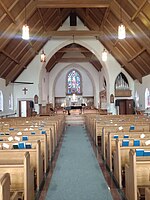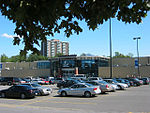Pleasant Park station
1996 establishments in OntarioCanada bus transport stubsOntario transport stubsOttawa stubsTransitway (Ottawa) stations

Pleasant Park station is a bus stop on Ottawa's Transitway served by OC Transpo buses. It is located in the southeastern transitway section at Pleasant Park Road (a collector road through Alta Vista) near Riverside Drive. The station is mostly used by people who take the 49 bus to or from Alta Vista, or by local residents in the nearby residential areas. The station has two levels: one connecting to Pleasant Park Road, the other to the transitway. It is one of the more lightly used stations due to the lack of any other trip generators or transfer connections.
Excerpt from the Wikipedia article Pleasant Park station (License: CC BY-SA 3.0, Authors, Images).Pleasant Park station
Pleasant Park Road, Ottawa Alta Vista
Geographical coordinates (GPS) Address Nearby Places Show on map
Geographical coordinates (GPS)
| Latitude | Longitude |
|---|---|
| N 45.39275 ° | E -75.669361111111 ° |
Address
Pleasant Park Road
Pleasant Park Road
K1H 1A2 Ottawa, Alta Vista
Ontario, Canada
Open on Google Maps









